Digging up geology’s spooky side
October 31, 2016
The geosciences are spookier than your introduction to petrology class may have let on.
Some geological formations are said to be haunted by ghosts, while others hold the bones of actual people. This Halloween we want to share with you our list of geological phenomena—from the macabre to the mysterious—that can make you shudder the next time you’re alone on an outcrop.
1.The Skull of the Cyclops
During the Pleistocene dwarf elephants inhabited the Mediterranean Islands. The skulls they left behind may have served as inspiration for the Cyclopes—a race of monstrous one-eyed giants that appear in Greek mythology. It’s not hard to imagine the nasal cavity located in the center of the skull as a giant eye socket. Austrian paleontologist Othenio Abel first suggested the connection between the extinct elephants and the clyclopes in 1914.
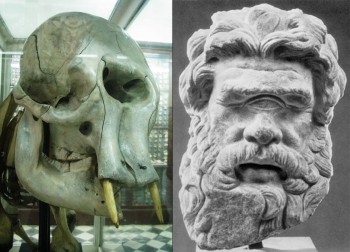
2.The Earthquake that Sunk a City
In 1692, a 7.5 magnitude earthquake made a city sink into the ground. The shaking of the quake made the ground beneath Port Royal, Jamaica undergo “liquefaction”—a phenomena where solid material behaves like a liquid. Most of the buildings in the city of Port Royal sunk into the ground and, according to a print depicting the aftermath, some people may have been swallowed, too. About 5,000 people died due to factors related to the earthquake and the accompanying tsunami.
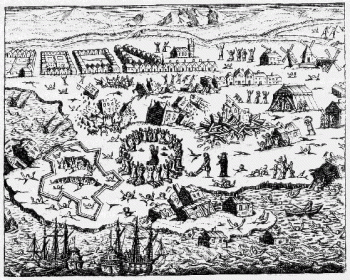
3.The River of Woe
In Greek and Roman mythology, the rivers of the underworld often started in the mortal realm. Acheron, a river in northwest Greece that flows to the Ionian Sea, is called the “River of Woe” because of its link to the underworld. Classical accounts describe Charon, the ferryman for departed souls, taking the newly dead across the Acheron into the underworld. Contemporary accounts often describe souls traveling across the river Styx.
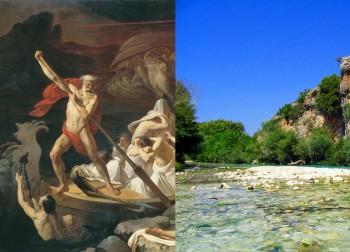
4.Killer Crystals
The Cave of Crystals in Naica, Chihuahua, Mexico is a beautiful danger. Filled with giant gypsum crystals that reach up to 39 feet long and 13 feet in diameter, the cave is a wondrous sight. But the high humidity and temperatures inside the cave create a death trap for explorers that spend more than a few minutes inside. The humidity prevents sweat from evaporating in the 113 degree Fahrenheit heat, a situation that can rapidly cause cell death and organ failure.
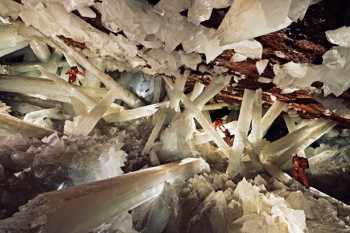
5.Haunted Rock
Shiprock or Winged Rock is the eroded remnants of a volcano in New Mexico that rises over 7,000 feet from the surrounding desert. The rock plays an important role in the mythology of the Navajo Indian nation, including stories involving departed spirits and monsters. According to one legend, the Navajo used to live on the rock and farm the land below, but a bolt of lightning cut off the path connecting the ground to the summit. The spirits of the stranded women and children are said to remain on the summit. Another legend says bird monsters that feed on human flesh nest on the rock.
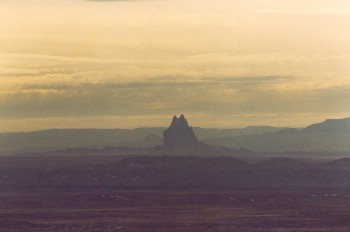
6.The Eruption Behind Frankenstein
The eruption of Indonesia’s Mount Tambora in 1815—the largest eruption ever recorded—birthed a monster. The eruption triggered global cooling and disrupted weather patterns, causing 1816 to be known as “The Year Without a Summer.” The dreary weather led author Mary Shelly and her companions to spend the 1816 summer indoors. They held a ghost story competition to pass the time—a project that resulted in Shelly writing the horror novel “Frankenstein; or, The Modern Prometheus.”
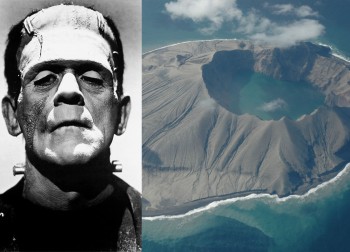
7.Where Down is Up
There are certain places around the world where balls appear to roll uphill instead of down. Explanations for the gravity-defying behavior have ranged from magnetism to witchcraft. In reality, the strange behavior can be explained by an optical illusion caused by the surrounding landscape. Check out this video that explains how.
8.The Door to Hell
In the Turkmenistan desert a flaming, 230-foot-wide pit called the Door to Hell has been burning for the past 40 years. The sinister site was born from an engineering blunder in 1971, when a team of Soviet scientists set a natural gas deposit on fire after the ground gave way beneath a drilling rig. What they expected to burn for hours has been going strong for decades.
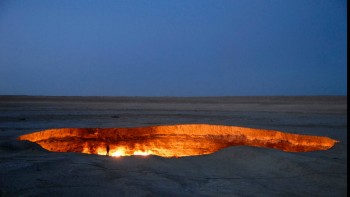
9.The Skeletons of Herculaneum
The eruption of Mount Vesuvius in 79 A.D. is famous for killing the citizens of Pompeii while preserving the Roman city under a layer of ash. In the nearby city of Herculaneum the effects of the eruption were delayed—prompting some inhabitants to attempt to leave by sea. A collection of more than 55 skeletons preserved inside a boat house is evidence that the eruption’s pyroclastic flow moved faster than the rescue ships.
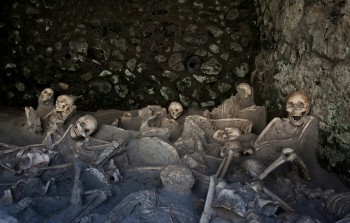
The serene blue water of cenotes—water-filled caverns—in Mexico’s Yucatan Peninsula hides a violent history. Their formation was catalyzed by rock fractures made by the asteroid impact that wiped out the dinosaurs. And the ancient Maya saw cenotes as symbolic passageways to the dead and used some a sites of human sacrifice. The bottom of the sacred cenote of Chichen Itza is coated with a 14-foot layer of blue paint, remnants of pigment that covered the bodies and valuables of sacrificial victims thrown into the water.

